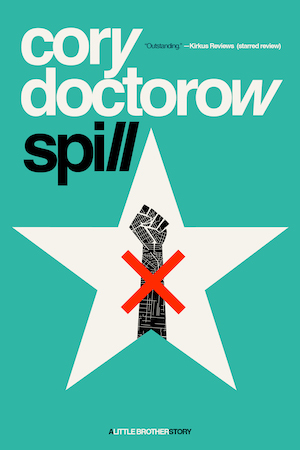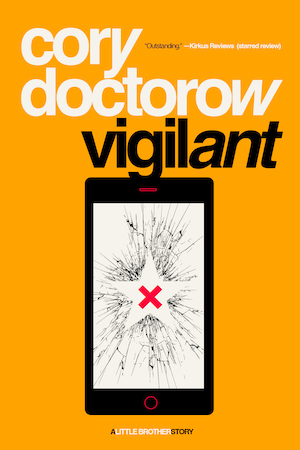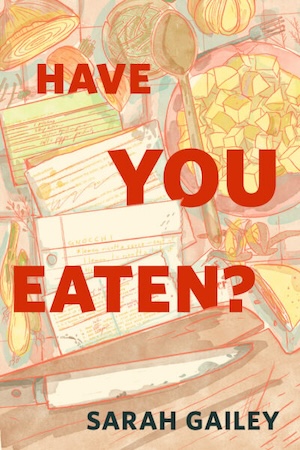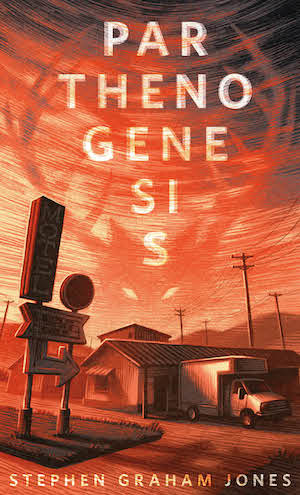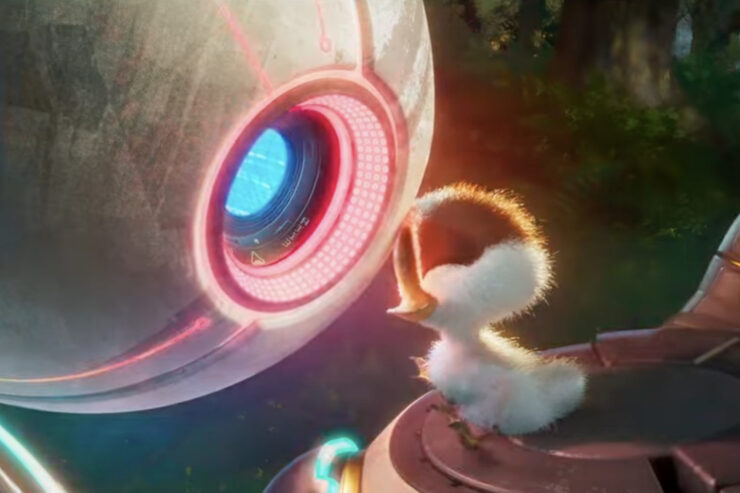I’ll admit to a deep-seated fascination with the oeuvre of certain animation directors. The one that most influenced my childhood (and therefore personhood) was Don Bluth, and Miyazaki is a given in these conversations, but Chris Sanders creeps higher and higher on my list with every movie he makes. As the driving force behind Lilo and Stitch, How to Train Your Dragon, and The Croods, Sanders has already built a fascinating roster of stories. So you can imagine my interest when I learned that he was adapting Peter Brown’s The Wild Robot for the big screen.
The Wild Robot is the tale of Rozzum Unit 7134 (Lupita Nyong’o), who crashes on a remote island and immediately wakes with the intent of fulfilling her primary function—to perform tasks for her owners to perfection. With no humans available, “Roz” attempts to serve the animals around her by learning their methods of communication, but finds no one in need of her services. While trying to contact her manufacturer for pickup and redistribution, Roz accidentally crushes a goose nest, killing all but one egg. She keeps the egg safe until it hatches, seeing to the birth of a runt that she eventually names Brightbill (Kit Connor). Informed that this makes her a defacto mother by opossum Pinktail (Catherine O’Hara), Roz is at something of a loss on how to get this goose fed, swimming, and eventually flying. The fox Fink (Pedro Pascal), who had first been determined to eat the little guy, eventually agrees to help Roz raise him up right in exchange for all the food she keeps unwittingly providing to him.
It’s hard to overstate how good this voice cast is, but knowing the talent involved, you can likely guess. The soundtrack from Kris Bowers takes his years of scoring intense, realistic dramas and puts them to dazzling new use. And if you’re just in it for the animation, run-don’t-walk to the theater right now. There’s a deliberate homage to Miyazaki in crafting the characters and surroundings with a “hand-painted” finish that lends incredible texture everywhere you look. This is also the last film from Dreamworks to be animated entirely in-house, a staggering disappointment when you see the skill on display. The devaluation of this artform will be a detriment to all upcoming animated projects, but we can at least appreciate what we’ve got here.
Just to start, Wild Robot takes an important step in fixing one of my largest personal peeves in science fiction: The fact that your “stock” robot characters are nearly all male-coded. Robots, of course, do not have true gender at inception—they are often programmed one way or another, and because humanity uses male as the default state of being, your average robot sidekick is typically given a male voice and male pronouns; C-3PO and R2 in Star Wars; Lucifer in the OG Battlestar Galactica; Baymax in Big Hero Six; Robot in Lost in Space; the eponymous Terminator; Kamelion and K-9 on Doctor Who; Number Five in Short Circuit; Data in Star Trek; Max in Flight of the Navigator. When robots (or, more commonly, program interfaces similar to Siri and Alexa) are given female-coded programming, there’s usually intention behind that choice—and that intention is nearly always wrapped up in the male gaze and their interest in human men: think Miss Minutes in Loki; Samantha in Her; Lisa in Weird Science. Even stories that intend to subvert that trope (Ex Machina being a prime example) participate gleefully in it at the same time. But Brown’s books, and now this movie, have done the opposite: they’ve defaulted the “stock” robot figure to female coding with no fanfare whatsoever.
There are ways in which this coding could be subverted in another gendered manner in The Wild Robot—Roz’s need to aid others and motherhood becoming her first clear task certainly leans in that direction—but Sanders is masterful as always in portrayals of family units in ways that never come off overtly gendered. Moreover, the story itself is far less concerned with the concept of motherhood on its own and far more concerned with what life is, fullstop. Its answer seems to be devastatingly simple on that front:
Life is a desire to care for others. What shape that care takes is immaterial. We are made to look after one another.
Roz is a robot manufactured to complete menial tasks for humans, but caring for Brightbill and for Fink gives her meaning. There is, pointedly, no sugarcoating of this concept: the actions of care itself are often thankless and messy rather than profound, and this self-appointed task takes a devastating toll on Roz’s body—just as Pinktail warns her it will, being a mother of seven (or is it six?) herself. But it also doesn’t steer directly into martyrdom as an answer either. Roz commits herself fully to the care of others and, when she needs it, winds up receiving that care in return. Her worldview, her meaning, teaches those around her in turn.
As for the “wild” aspect of the story, Roz’s environment has a great deal to teach its audience about the symbiotic tides of our own world: cycles of birth and maturation, what it means to be part of a full ecosystem, the movement of seasons. The cultural adherence to Darwinian “survival of the fittest” as a concept has messed about with our understanding of nature for long enough. More recent scientists have put paid to that idea and indeed discovered the opposite out in nature and amongst ourselves; yes, nature necessitates a circle of life and death, but survival is rife with symbiosis and cooperation. We succeed because work together, not because we compete the best. In many ways, you could argue that this story is a testament to that concept, though it couches it in fantastical terms. As Fink later tells it, kindness is Roz’s greatest survival mechanism. That’s it. That’s the message.
The film also slyly pushes against concept of productivity as a measure of value with this interplay. Roz is designed to complete “tasks,” a nebulous concept with no end in sight for her. When she completes a task, she’s meant to immediately receive a new one. Yet her choice to parent Brightbill is not a simple task despite her attempts to organize it into stages and goals. A great deal of the endeavor, whether she realizes it or not, consists of existing alongside her chosen family. Productivity isn’t relevant to the life that she builds, and that is what fulfills her.
There are rooted concepts you find in every Chris Sanders project, and the more films he makes, the more this perspective comes clear. Intrinsic to each of these stories is the idea that families come in all sizes and configurations, that what is new should never be feared, that cooperation and coexistence are essential, and that disability should never be met with destruction. That last one is perhaps the most radical point, and one that The Wild Robot showcases without ever resorting to sermonizing; Brightbill is a “runt” and has to work much harder than the rest of the geese to migrate when winter comes. He is visibly different and therefore ridiculed, but it’s his perspective that’s most valuable when the flock is in danger. It’s not in the foreground of the narrative because this is primarily Roz’s story, but that vantage point remains a cornerstone of Sanders’ work.
It’s also key here that Roz was created by humans to do various forms of labor, but that her instinct to protect a being that would have surely died in “nature”… is a very human trait. So while corporations might be inclined to abuse technology for their own profit (as we see of the Universal Dynamics company that created Roz), this story is designed to point us toward our better selves. Toward the version of us that rescues unwanted animal offspring who wouldn’t make it with the rest of their litter. Toward the version of us that wants to work together even when it’s difficult.
Toward the version of us that loves stories about robots who live in the wild and care for goslings until they can fly.
I’m hard-pressed to come up with another film that so easily communicates the joy of being alive while never once underselling life’s inherent traumas. In many ways, The Wild Robot takes themes from adjacent films like The Iron Giant and Wall-E and does them each one better. It is about being an individual and a community; about being a family and needing to accomplish things for yourself; about existing within nature and still knowing when to push back on instinct. It is a film that takes the work of life and makes it magic. And I’m not sure I can offer higher praise than that.


